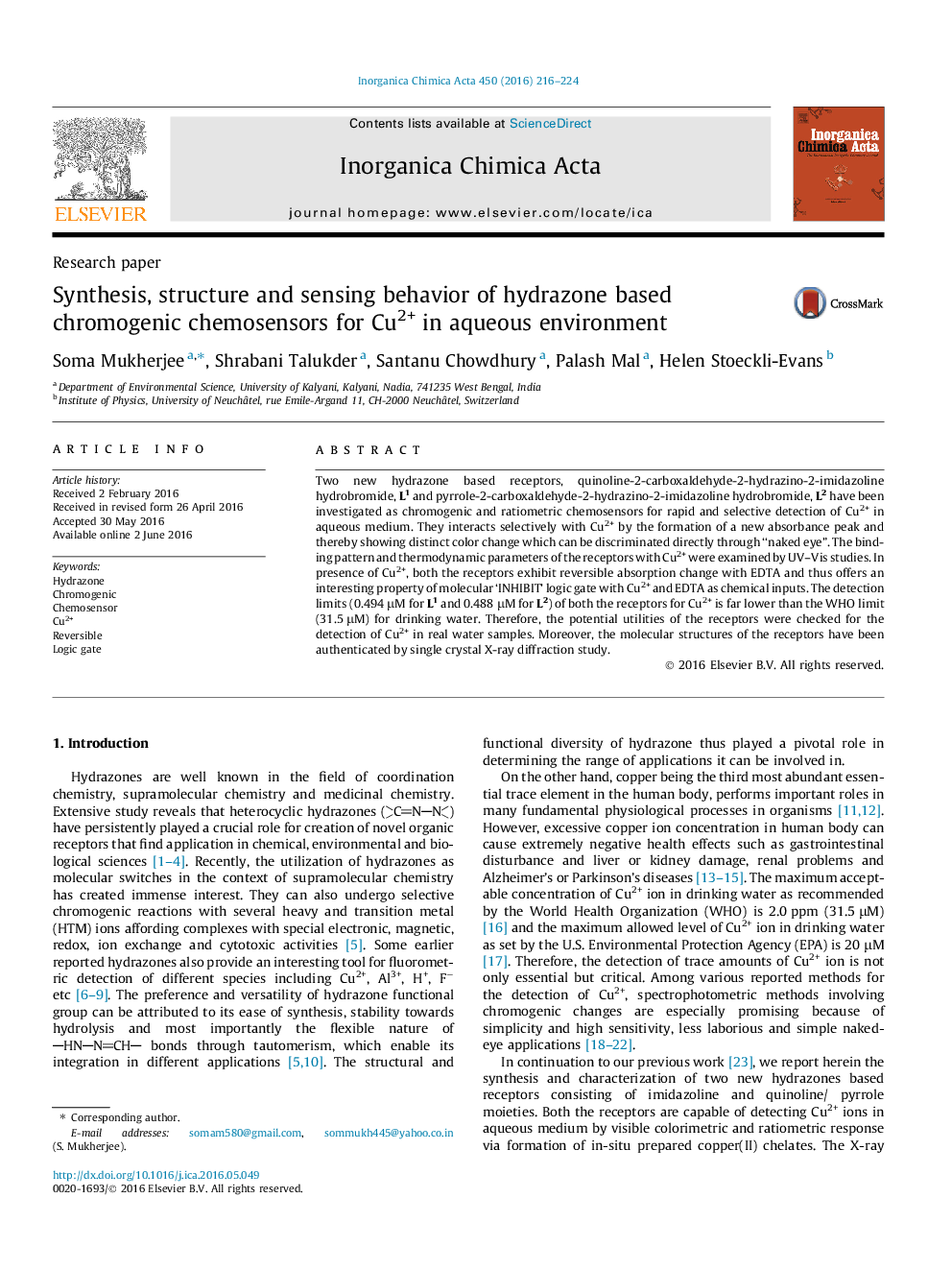| Article ID | Journal | Published Year | Pages | File Type |
|---|---|---|---|---|
| 1305390 | Inorganica Chimica Acta | 2016 | 9 Pages |
•Hydrazone based receptors for chromogenic and ratiometric recognition of Cu2+.•Molecular structures authenticated by single crystal X-ray diffraction study.•Stoichiometry and thermodynamic parameters were studied by UV–Vis titrations.•The receptors exhibit ‘INHIBIT’ logic gate with Cu2+ and EDTA as chemical inputs.•The receptors detect and quantify Cu2+ in water samples with low detection limit.
Two new hydrazone based receptors, quinoline-2-carboxaldehyde-2-hydrazino-2-imidazoline hydrobromide, L1 and pyrrole-2-carboxaldehyde-2-hydrazino-2-imidazoline hydrobromide, L2 have been investigated as chromogenic and ratiometric chemosensors for rapid and selective detection of Cu2+ in aqueous medium. They interacts selectively with Cu2+ by the formation of a new absorbance peak and thereby showing distinct color change which can be discriminated directly through “naked eye”. The binding pattern and thermodynamic parameters of the receptors with Cu2+ were examined by UV–Vis studies. In presence of Cu2+, both the receptors exhibit reversible absorption change with EDTA and thus offers an interesting property of molecular ‘INHIBIT’ logic gate with Cu2+ and EDTA as chemical inputs. The detection limits (0.494 μM for L1 and 0.488 μM for L2) of both the receptors for Cu2+ is far lower than the WHO limit (31.5 μM) for drinking water. Therefore, the potential utilities of the receptors were checked for the detection of Cu2+ in real water samples. Moreover, the molecular structures of the receptors have been authenticated by single crystal X-ray diffraction study.
Graphical abstractTwo new hydrazone based chromogenic and ratiometric chemosensors were investigated for selective recognition of Cu2+ in aqueous medium. Their molecular structures have been authenticated by single crystal X-ray diffraction study.Figure optionsDownload full-size imageDownload as PowerPoint slide
